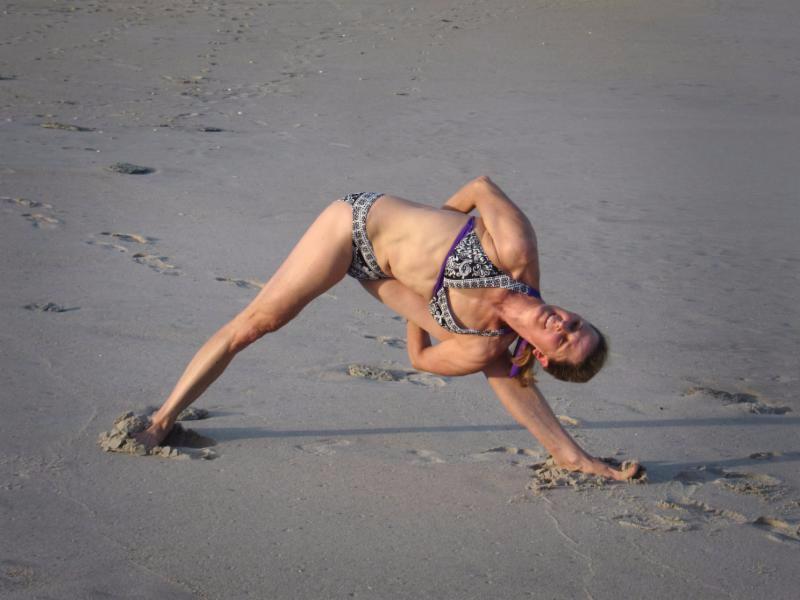Do you love going to the beach in the summer? I do. And I love doing yoga on the beach. Some resort towns offer yoga classes on the beach and that can be great, but it is often fun to just do your own practice. I love to go for a long walk, stretch out and do a practice and then go for a swim.
If the idea of practicing yoga on the beach appeals to you, I thought I’d share some of my personal do's and don'ts before you head out:
1. Do your practice on the beach before 10:00 am or after 4:00 pm when the sun is not as strong. I especially prefer the earlier time because I am a morning person. But the real reason I prefer these times is that I do not like to practice yoga on the beach while wearing sunscreen. Sand sticks to the sunscreen and makes me uncomfortable. Of course you can wear athletic clothing that has an SPF factor if you are concerned about sun exposure, but I like to get a little of direct sun in the off hours for the production of Vitamin D. Also, unless you like attracting a lot of attention, the off hours give you a little more space.
2. Don't take your sticky mat to the beach! Sticky mats were made to work on hard floors, not sand, dirt or even grass. Sticky mats will attract and hold onto sand. When teaching yoga at the studio, I have often stepped on a pile of grit on the floor from someone's sandy yoga mat. It is hard to get the sand out of the mat. Even after washing sometimes sand remains. Let your hands and feet feel the earth. It is grounding and good for the soul.
3. Use a towel when necessary. I use a towel mostly to keep my hands clean. When I do Downward facing Dog, I place my hands on a towel and keep my feet on the sand. I definitely use my towel for seated and lying down poses. When the towel gets scrumbled up and sandy, I just shake it out and reposition it on a fresh patch of sand. Although I have to say that I love doing a split directly on the soft sand. Your heels will dig a little trench and the warm soft sand will support your whole thigh in a way that allows you to relax into the stretch. Usually after a split, I might rinse off in the water, do a Seated Forward Bend on my towel and then do Savasana.
4. Change your practice to suit the conditions. Instead of coming into your standing poses from Down Dog, start them from Tadasana. This way your hands don't get sandy. You can do Sun Salutes directly on the sand. That will inspire you to not lower onto your belly, but to hold the Low Push Up and transition into Upward Facing Dog instead of going to your belly for Cobra. If you do need to lower to your belly, either do it on a towel, or skip the sun salutes.
5. Find the most level part of the beach to practice on. Sometimes this is hard as a lot of beaches slope to the water. You can adapt most of your poses to a slight incline, but headstand and a lot of the hand balancing on anything but a truly flat surface is tricky.
Revolved Triangle on the Beach
Bound Triangle
While I specifically mention the beach, you can apply these principles to any outdoor yoga session. You don't need a yoga mat to do yoga, sometimes it is helpful and sometimes it just gets in the way. I hope you get out there and enjoy doing yoga outside. Working on different surfaces causes your muscles to work in a different way. It’s a refreshing addition to your practice.
Have fun out there and feel free to post a picture of yourself doing yoga on the beach, or any other place outside.
I’ll see you in class! Karin


